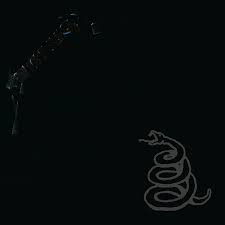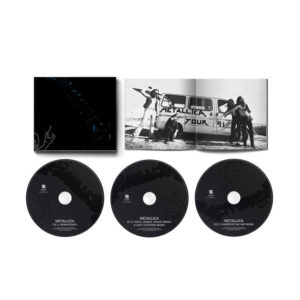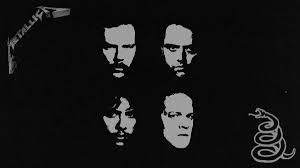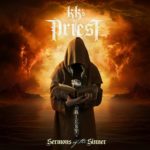Metallica: Black Album (Remastered) – 3-CD Expanded Edition Review
As the 80’s shifted into the 90’s, I was a metal obsessed teenager. I proudly grew my hair long, wore my leather jacket, and scribbled the Metallica logo on my school notebook. In those pre-internet days, I’d check the record store weekly for signs of a new Metallica album. The process seemed to go on forever, until the summer of 1991 when the self-titled Metallica album landed in shopping malls across America.

I’m not sure I hated the Black Album at first. It was certainly different. I wanted the speed, anger, and intensity of “Dyer’s Eve” but was given the brooding melancholy of “The Unforgiven” and “Nothing Else Matters.” Regardless, I played my cassette often enough to get an appreciation for songs like “Through the Never” and “The Struggle Within.” It wasn’t exactly what I wanted, but after years of waiting (an eternity in my adolescent mind) I accepted that Metallica seemed to be softening their approach after the success of “One.”

My hatred of the Black Album was a slow burn. Hindsight and adult perspective sheds light on my resentment. Everyone from football jocks to bratty kid sisters seemed to suddenly love Metallica. As someone whose very identity was wrapped up in the metal scene, I felt conflicted. A lot of us did. It felt like the band used heavy metal as a stepping stone to infiltrate popular culture. Hell, they even hired the producer that made Bon Jovi records.

My adult self finds humor in my childhood reaction to the Black Album but also recognizes the passion. I LOVED Metallica and they let me down. Although I enjoyed the expanded editions of Master of Puppets and Justice, I had no intention of revisiting the self-titled Metallica album. When I stumbled the 3 CD Expanded Edition in Target, I relented and opted to give the Black Album another chance.

The appeal of these expanded edition is the bonus material. As a musician that spent decades writing riffs in my bedroom before molding them into songs with a band, I gravitated towards Disc 2. Aptly titled Riffs, Demos, Rough Mixes & Easy Listening, we get to hear Metallica as creative entities. These are rock stars reduced to vulnerable mortals mired in a messy, disconnected songwriting process.

The disc begins with “Enter Sandman (From Kirk’s Riff Tapes).” The subtitle is indeed accurate. Immediately, you’re met with a recording eternally removed from Bob Rock’s gleaming production. The famous “Enter Sandman” riff is recognizable enough, but it sounds as if Kirk recorded his noodling on a cheap boombox set-up in his bedroom.
Granted, not everyone will have an interest in hearing such a rough recording. To guitarists everywhere, there is something very satisfying about hearing a famous riff in this capacity. THIS is how musicians work. When I think back to the countless riffs I captured to tape before fleshing out rough ideas into a main song, it fills me with nostalgic pride. Knowing that childhood idols work through creative ideas using the same process humanizes them.
It’s only natural to follow up the except from “Kirk’s Riff Tape” with the finished product. Being a CD of bonus material, we get a rough mix on “Enter Sandman.” The mix may be “rough” but it’s almost indistinguishable from the album version.
“Enter Sandman” is the kind of song that I literally never want to hear again in my life. I lived through the MTV era when the video was played on heavy rotation. I still recall remember being pissed that it was so damn…..accessible. Listening with fresh ears from an adult perspective, it’s easy to see why “Enter Sandman” resonated with the kids outside of the core metal demographic. It’s a well-constructed song. We have elements of light and shade, dynamics, memorable riffs, a catchy chorus, all recorded with rock solid production. It may not be THRASH, but taken as a heavy rock song, it’s damn near perfect.
While some of the tracks on Disc 2 are merely pre-production rehearsals and rough mixes, the tracks that are far from completion are the most intriguing. Demos offer insight into how the writing process unfolds. “Holier Than Though” is a prime example. Musically, the song is complete, yet clearly lyrics have not been written. All we have is the chorus. Vocal melodies are fully intact and represented by James singing nonsense words. Yet, we have the phrase “Holier Than Though,” to serve as a guiding theme for eventual completion of verses.
Again, these demos may seem pointless to the casual listener. Musicians are bound to find them fascinating. Like Kirk’s riff tapes, demos represent another step in the creative process. I found myself reminiscing about previous bands. With the Holier Than Though demo, the band KNOWS they are onto a solid idea. A pervasive sense of anticipation and excitement fills the room. The whole thing could still fall apart, but if the lyricist can make a valid contribution, they’ll have a new composition to be proud of. Listeners can SENSE this excitement. The various demos offer glimpses into the infectious wave of inspiration that pulsed through the Black Album sessions.
Working my way through disc two offered additional insight beyond the writing process. Although I had vehemently opposed the creative left turn captured on the Black Album, it’s clear these are good songs. How could they not be? In the U.S. alone this album sold over 16 million albums. That kind of success from a fringe band is insane! No amount of record company promo can buy that kind of success without a solid product. Metallica managed to figure out what American youth wanted in 1991 and delivered in a big way, paving the way to become one of the biggest bands in the world.

Disc number three offers up 13 tracks recorded during the Wherever We May Roam tour. Rather than featuring a single concert, we get eclectic live dates ranging from Moscow in 1991 to Mannheim, Germany 1993. Nine songs are taken from the Black Album along with classics like “Whiplash” and “For Whom the Bell Tolls.” The set is closed out with the rarity, “So What.”
Packaging follows the precedent set by the Master and Justice Expanded Editions. I’ve been a fan of the thick cardboard packaging. It prominently makes its presence known on the CD shelf and has a way of prompting owners to revisit the music long after initial listening sessions. The 28-page booklet alone is worth the price of admission. Vintage photographs provide a snapshot of the early 90s and visually complement the music.

Purchasing the 3 CD Expanded Edition is a no brainer if the Black Album was a mainstay of your childhood. Even thrashers that labelled Metallica sell-outs may want to revisit the record. It’s still a watered-down metal album with mass appeal. Regardless, this deluxe edition amounts to a rags to riches story of how a group of outsiders became music industry giants. Most old school Metallica fans will doubtlessly prefer the first four albums, but this self-titled offering is a historically significant album that changed the course of 90s metal.




